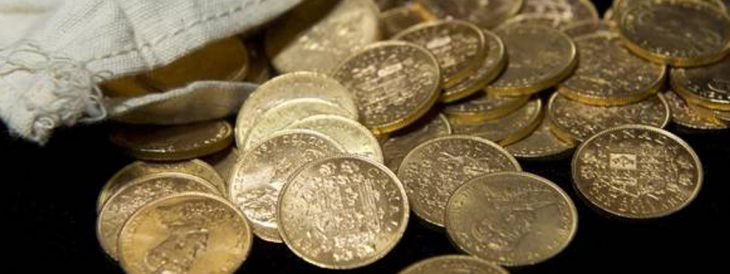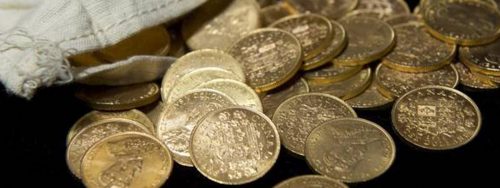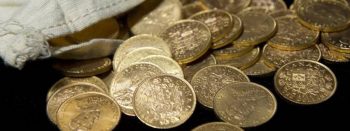Last updated on May 2nd, 2024 at 03:36 pm
Last Updated on May 2, 2024 Posted by Colonial Acres Coins
The real story of the first Canadian gold coins goes back to 1853. That is when Canada adopted the gold standard. It was a bold move that simplified trade. At the same time, it required the country to have enough gold reserves to back its currency. Adopting this standard resulted in a growing interest in mint gold at a Canadian mint. An interest that would prove to be the birth of Canadian coin currency.
Canadian Coin Currency: The Idea Behind Gold Coins
At the time, Canadian miners lobbied for domestic refining capabilities. This was because they were often forced to sell their gold to the U.S., a move which crippled their profits. A proposition existed for the establishment of a Mint in the major gold producing region at the time, which was British Columbia. However, it was rejected by the Senate.
Time passed, and a major gold rush in Yukon’s Klondike region brought an awareness of gold back into Canadian consciousness in the late 1890s. Finally, the Ottawa Mint Act was passed in 1901. According to the Act, Canada would see a branch of the British Royal Mint established and tasked with producing domestic Canadian coin currency. It would also be in charge of manufacturing Canadian gold coins and British sovereigns.
Early Days Of The Royal Canadian Mint
The Mint itself was not opened until 1908. However, the idea of Canadian coin currency minted from Canadian gold still needed a full refinery in order to be realized. The construction of the refinery began in 1909 and ended in 1911. But, instead of being minted that same year, Canadian gold coins had to wait another full year. This was due to the death of King Edward VII in 1910, as well as the indecision over the coins’ reverse design.
Finally, a total of 16,000 Canadian gold coins were ordered by the Dominion Government: 8,000 5-dollar ones and 8,000 10-dollar coins. Production of these gold coins continued until 1914. By the end of summer 1912 alone, Assistant-Receivers General across Canada had received $600,000 worth of gold coins.
The First Gold Canadian Coin Currency
These very first gold coins were completely Canadian in every way. They were made entirely out of Canadian gold and featured the first symbol of Canada to ever appear on a gold coin. The design featured the Canada Coat of Arms. As it appeared in 1912, the Coat of Arms was composed of a maple bough surrounding a shield. The shield encompassed the provincial symbols of the four provinces that joined Confederation in 1867:
- Ontario, which was represented by St. George’s Cross and maple leaves
- Quebec, represented by a pair of fleur de lis with a British lion and maple leaves
- Nova Scotia, featured by a salmon between Scottish thistles
- New Brunswick, represented by a British lion and a sail-ship to depict the province’s prowess in building ships
Below the shield, the date face value “Five Dollars” or “Ten Dollars” were engraved, along with the date “1912.” Above the shield was the inscription “Canada.” Both sides of the coin were framed with a raised beaded circle, and the obverse featured the effigy of King George V.
End Of Production
These coins were discontinued in favour of gold bars in 1915. The Royal Canadian Mint was in 1914 producing the last run of the gold circulation coins that would ever be created. The Government of Canada took tight hold of its gold reserves as the nation sent its forces to fight with the Allies on the Western Front during World War I. The gold Canadian currency coins remained for more than 75 years in cloth bags in the Bank of Canada’s vaults.
For more information on these and other interesting coin pieces, visit Colonial Acres Coins. For more information on the 2017 $250 Silver Coin: A Tribute To The First Canadian Gold Coin, visit this link.




